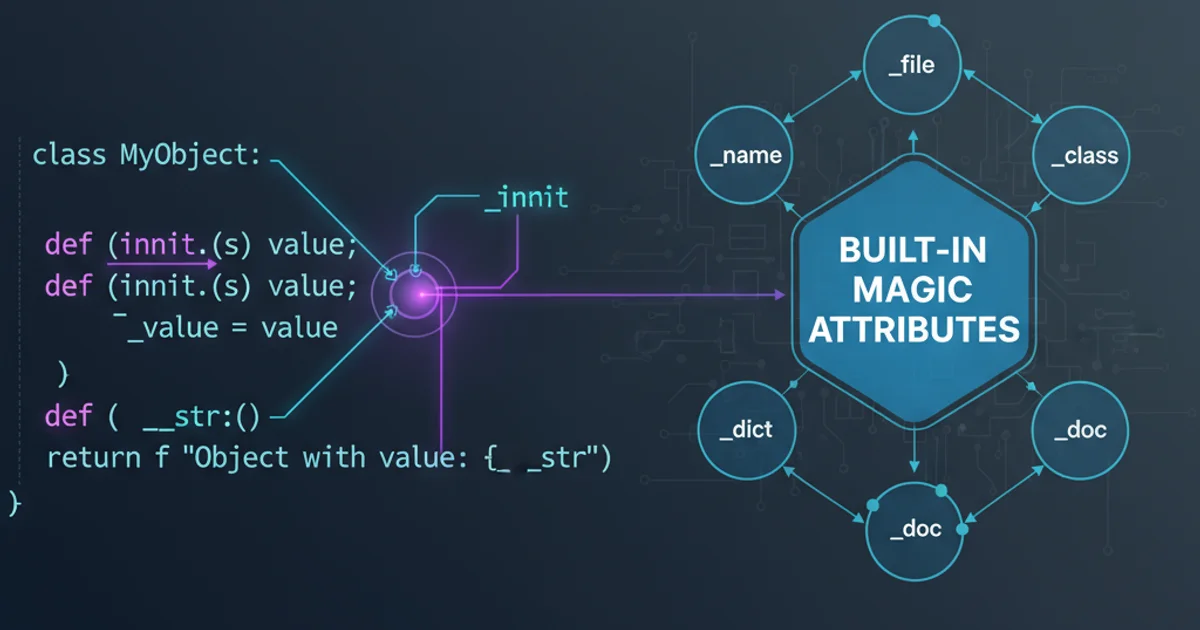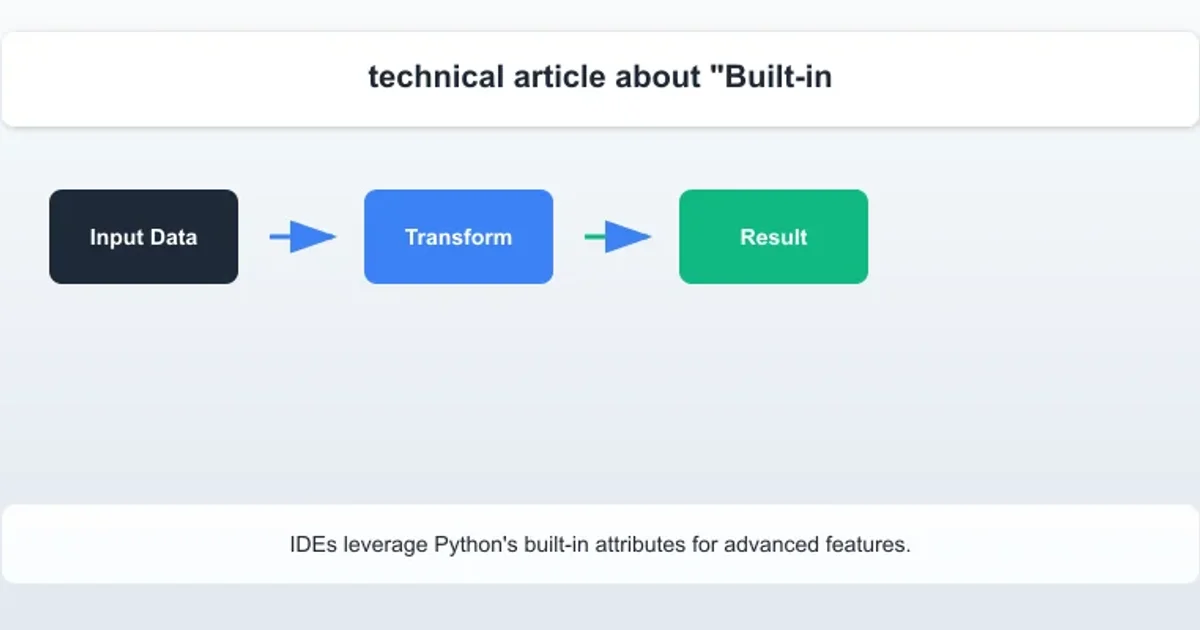Built-in magic variable names/attributes
Categories:
Understanding Python's Built-in Magic Variables and Attributes

Explore the powerful, often hidden, built-in magic variables and attributes in Python that provide introspection and control over objects and modules.
Python, known for its readability and powerful features, includes a set of special built-in variables and attributes. Often referred to as "magic" or "dunder" (double underscore) names, these identifiers provide a mechanism for Python's internal workings and allow developers to interact with the language's core functionality. Understanding these attributes is crucial for writing more robust, flexible, and Pythonic code, enabling advanced introspection, customization, and debugging.
What are Magic Variables/Attributes?
Magic variables and attributes are special identifiers in Python that are typically enclosed in double underscores (e.g., __name__, __doc__, __file__). They are not meant to be invoked directly by user code in most cases but are rather hooks that Python uses to implement various behaviors. They allow objects to interact with Python's built-in functions and operators, define their behavior in different contexts, and provide metadata about modules, classes, and instances.
flowchart TD
A[Python Object/Module] --> B{Has Dunder Attribute?}
B -->|Yes| C[Python Interpreter uses it for special behavior]
C --> D["e.g., `__init__` for construction, `__str__` for string representation"]
B -->|No| E[Normal attribute access]
D --> F[Customizes object behavior]
E --> FHow Python utilizes 'dunder' attributes for special behaviors.
Common Magic Variables and Their Uses
Let's delve into some of the most frequently encountered magic variables and attributes, understanding their purpose and how they influence Python programs.
# __name__: Identifies the current module
# When a script is run directly, __name__ is '__main__'
# When imported, __name__ is the module's name
if __name__ == '__main__':
print("This script is being run directly.")
else:
print(f"This script is being imported as a module: {__name__}")
# __doc__: Provides the documentation string for a module, class, function, or method
def my_function():
"""This is a docstring for my_function."""
pass
print(f"\nDocstring for my_function: {my_function.__doc__}")
# __file__: The pathname of the file from which the module was loaded
print(f"\nPath to this file: {__file__}")
# __package__: The name of the package to which a module belongs
# For top-level scripts, this is usually None
print(f"Package name: {__package__}")
# __builtins__: A reference to the dictionary of built-in functions and exceptions
# print(dir(__builtins__)) # Uncomment to see all built-ins
# __dict__: A dictionary or other mapping object used to store an object's (writable) attributes
class MyClass:
def __init__(self, value):
self.value = value
obj = MyClass(10)
print(f"\nObject's attributes: {obj.__dict__}")
# __class__: The class to which an instance belongs
print(f"Object's class: {obj.__class__}")
print(f"Class name: {obj.__class__.__name__}")
Examples of common built-in magic variables and attributes.
__dict__ provides access to an object's attributes, it's generally recommended to access attributes directly (e.g., obj.value) rather than through obj.__dict__['value'] for better readability and to leverage Python's attribute access mechanisms.Impact on Sublimetext and IDEs
Integrated Development Environments (IDEs) like Sublime Text, VS Code, or PyCharm often leverage these built-in attributes for enhanced functionality. For instance, when you use features like 'Go to Definition' or 'Find Usages', the IDE's language server parses your code and uses Python's introspection capabilities, which are heavily reliant on these dunder attributes. Autocompletion suggestions, linting, and debugging tools all benefit from the metadata provided by __name__, __file__, __doc__, and others. Understanding these helps in debugging issues related to module imports or understanding why certain IDE features behave the way they do.

IDEs leverage Python's built-in attributes for advanced features.
AttributeError or TypeError.